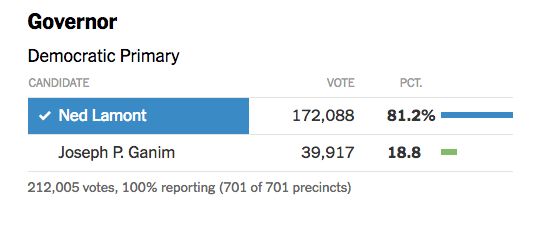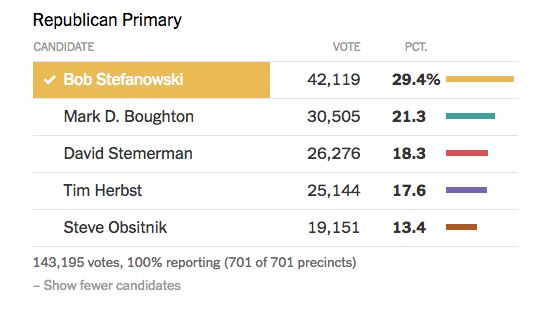Connecticut Gov. Primary: Major Party Candidate Advances with 2% Voter Support

Connecticut was one of four states that had its 2018 primary elections Tuesday. Republicans and Democrats went to the polls to decide their party's respective nominees -- though not in high numbers.
According to the election results posted on the New York Times, 355,200 total voters cast a ballot for governor in the Republican and Democratic primaries. That is about 29 percent of total registered Republicans and Democrats, and around 17 percent of total active registered voters.
It's important to note this because Connecticut is a closed primary state, which means only registered members of the Republican and Democratic parties can participate. A large segment of the voting population cannot vote in these taxpayer-funded elections, including the 40 percent of the electorate that is registered unaffiliated.
Thus, the major party candidates all voters have to choose from in November were selected by less than 10% of the electorate. And in one party's case, around 2%.
Democrat Ed Lamont won his primary election easily, carrying 81.2% of the vote. Though when you look at this in relation to the entire registered voting population, that is only around 8 percent of active registered voters.
Source: New York Times
Republican Bob Stefanowski carried the Republican primary with 29.4% of the primary vote. This means 7-in-10 Republican voters didn't cast a ballot for him. It also represents under 10 percent of registered Republicans and approximately 2% of total voters.
Source: New York Times
Connecticut is listed as a "Toss Up" state by Cook Political Report. As voters outside the major parties make up a clear plurality of voters, independents will ultimately decide Gov. Dannel Malloy's replacement.
The two candidates above will be bolstered by the media as the two viable choices voters have. Yet most voters didn't vote for these candidates or were left out of the process to decide who these candidates would be.
How can voters trust them to put their interests first?



